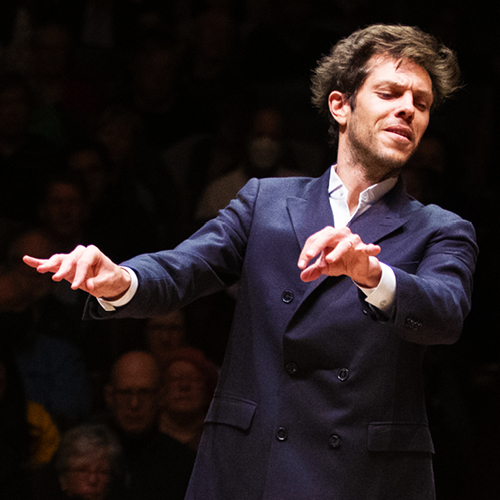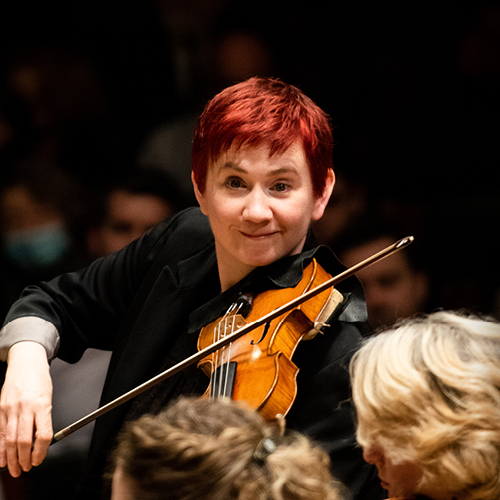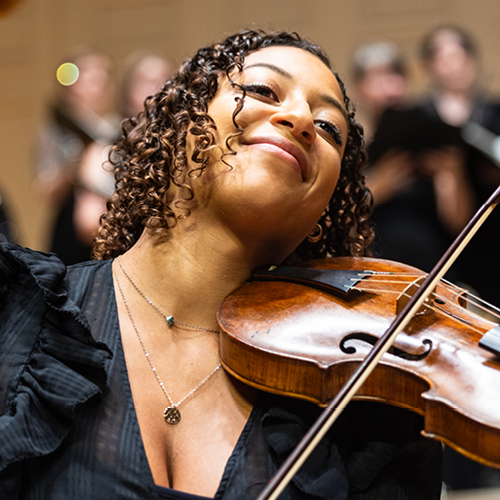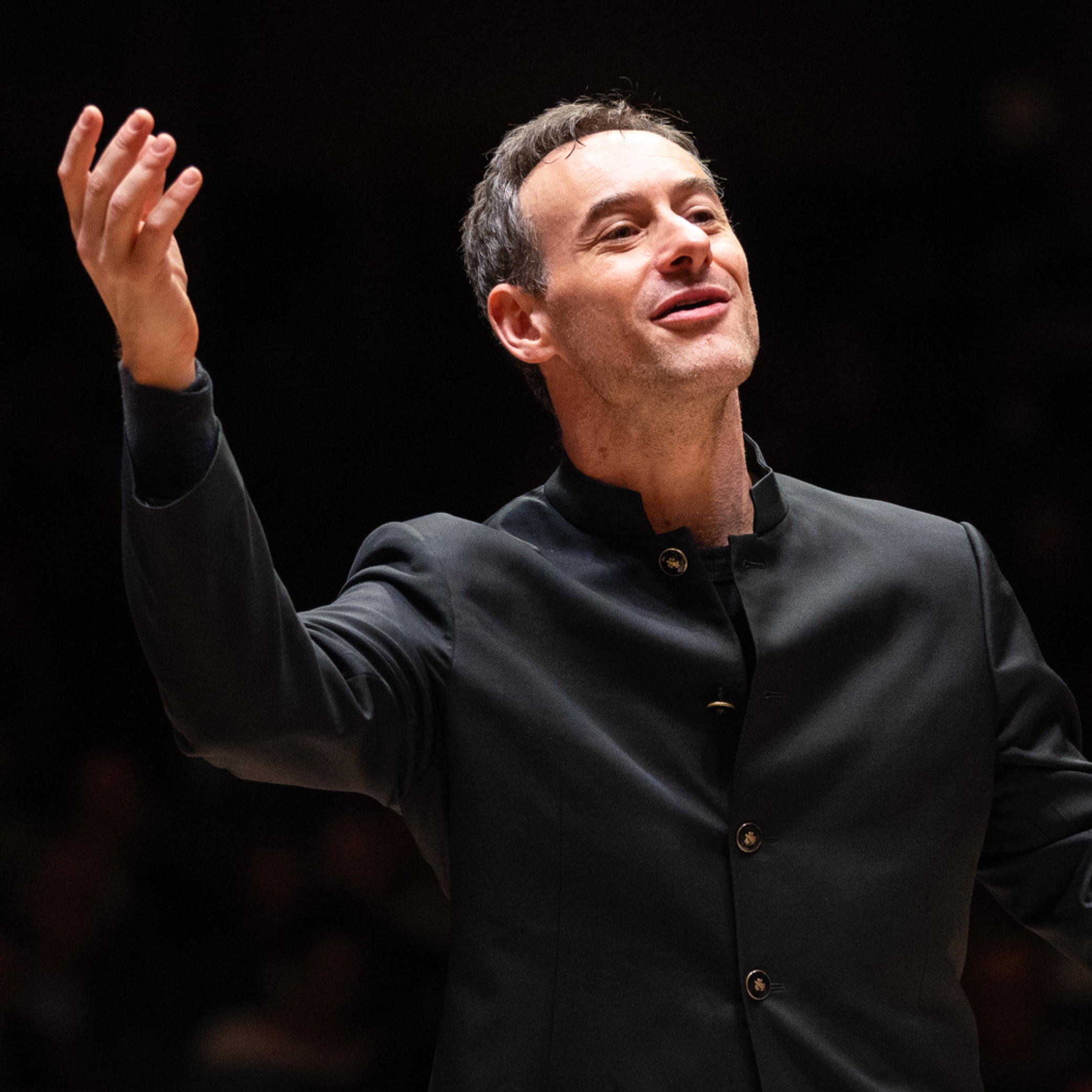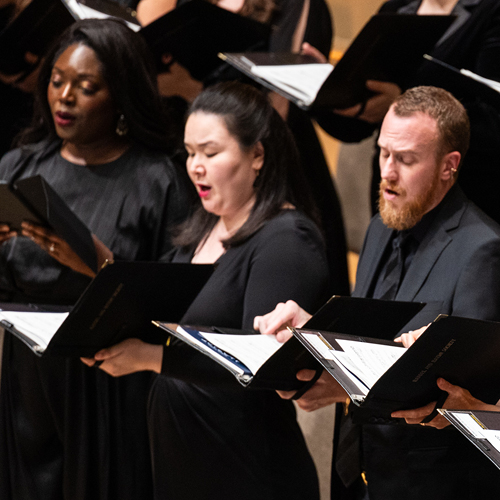Historically Informed Performance, commonly shortened to HIP and sometimes referred to as period performance, tries to answer the question: How did a piece of music sound to audiences in the composer’s day? Because H+H performs European concert music from the 17th through the early-19th centuries, the current understanding of the musical traditions associated with those centuries underlies every performance. In many ways, HIP is musical time-travel.
We’d love to welcome you to the beautiful world of HIP! Explore H+H’s 2025-26 Season featuring an array of repertoire from the early Baroque to the late Classical period to be passionately performed by the H+H Orchestra and Chorus using period instruments and Historically Informed Performance techniques.
How does H+H use period instruments in Historically Informed Performance?
One aspect of being HIP means using instruments (called period instruments) from the composer’s time, either historic instruments or authentic reproductions. Many of these instruments vary in construction from their modern counterparts—instruments made from the 19th century forward. How the instruments were played (performance practice) in the composer’s time is often different as well.
Discover more about how H+H uses period instruments here.
How do instruments differ in Historically Informed Performance vs. modern performance?
While most period instruments resemble modern ones, they are not the same. Period brass instruments such as the trumpet and French horn do not have any valves, and period woodwinds—oboe, clarinet, and bassoon—have fewer keys. In addition, the period flute is made of wood rather than metal.
String instruments of 17th and 18th centuries have fingerboards that are shorter than modern strings. This affects how the instruments are played, as does the absence of chin rests (violins and violas) and endpins (cellos). Historical bows are shorter and are shaped differently. In the Baroque, the wood of the bow was bent away from the hair. With the Classical or transitional bow, the wood was bent more toward the hair, like how a modern bow is constructed. The construction of the bow changes how it is held and played; for example, with a Baroque bow, the middle section is most often used for sound production.
The actual strings are made of gut (or gut wound with steel) rather than metal, producing a warmer and sweeter sound. Gut strings are also one reason why period instruments are tuned at a lower pitch than modern ones. If a composition were played by both a period-instrument and modern ensemble, one of the first audible differences between the two would be the pitch. Modern orchestras tend to tune to A=440 Hz (or a little higher) and period-instrument ensembles often tune to either side of A=420 Hz.
Early keyboard instruments like the harpsichord and organ play an important role in the performance of music from the Baroque era, about 1600-1750. Before conductors were commonly used to lead instrumental ensembles, Baroque orchestras were often directed by the keyboard player providing a steady, musical foundation upon which the other instruments add their parts. H+H Artistic Director Jonathan Cohen is an accomplished keyboardist who frequently directs from the harpsichord.
Why Historically Informed Performance provides a unique sound
The differences in period instrument construction impact how they are played and how their sound blends within a larger group. While modern orchestras often strive for a uniformity of sound, period instrument ensembles strive to blend the unique sounds of the individual instruments. This blending is audible throughout Beethoven’s Symphony No. 7, as each instrumental line is articulated, even as one line often plays off another. Subtle shades emerge and recede with each instrument, in a constantly changing array so that each line is heard both independently and as part of the whole. For the listener, this sound is like no other. It is fresh, clean, and filled with energy.
To learn more, this WBUR feature and this article from the H+H Bicentennial Magazine provide an overview of H+H’s 200+ year history and dedication to HIP.
Teresa M. Neff
July 2025
Teresa Neff, Ph.D., is the Handel and Haydn Society’s Christopher Hogwood Historically Informed Performance Fellow. She has shared her research on eighteenth-century music at professional conferences and concert previews throughout the United States. She published an edition of Gottfried van Swieten’s symphonies and co-edited The Handel and Haydn Society: Bringing Music to Life for 200 Years. Teresa is a Senior Lecturer in Music at the Massachusetts Institute of Technology.

